Why Designers Need a Strong Cover Letter
In the competitive world of design, a well-crafted cover letter is your first opportunity to make a lasting impression. More than just a formality, a cover letter serves as your voice, allowing you to connect with potential employers on a personal level and showcase your unique skills, experiences, and design philosophy. It complements your portfolio and resume, providing context and depth to your qualifications. This is especially true for designers, where visual communication is key, and a cover letter can be a powerful tool to demonstrate your writing and communication abilities, critical elements in a designer’s role. Without a strong cover letter, your application might get overlooked, missing the chance to land your dream design job.
The Purpose of a Cover Letter
The primary purpose of a cover letter is to introduce yourself to a potential employer and express your interest in a specific role or company. It’s your chance to explain why you’re a great fit beyond what’s listed in your resume and portfolio. A cover letter allows you to highlight your most relevant skills and experiences, demonstrating how they align with the job requirements and the company’s values. Furthermore, it enables you to communicate your enthusiasm for the opportunity and provide a narrative about your career aspirations. Effectively, it personalizes your application and makes you more memorable, differentiating you from other applicants.
How Cover Letters Help Designers Stand Out
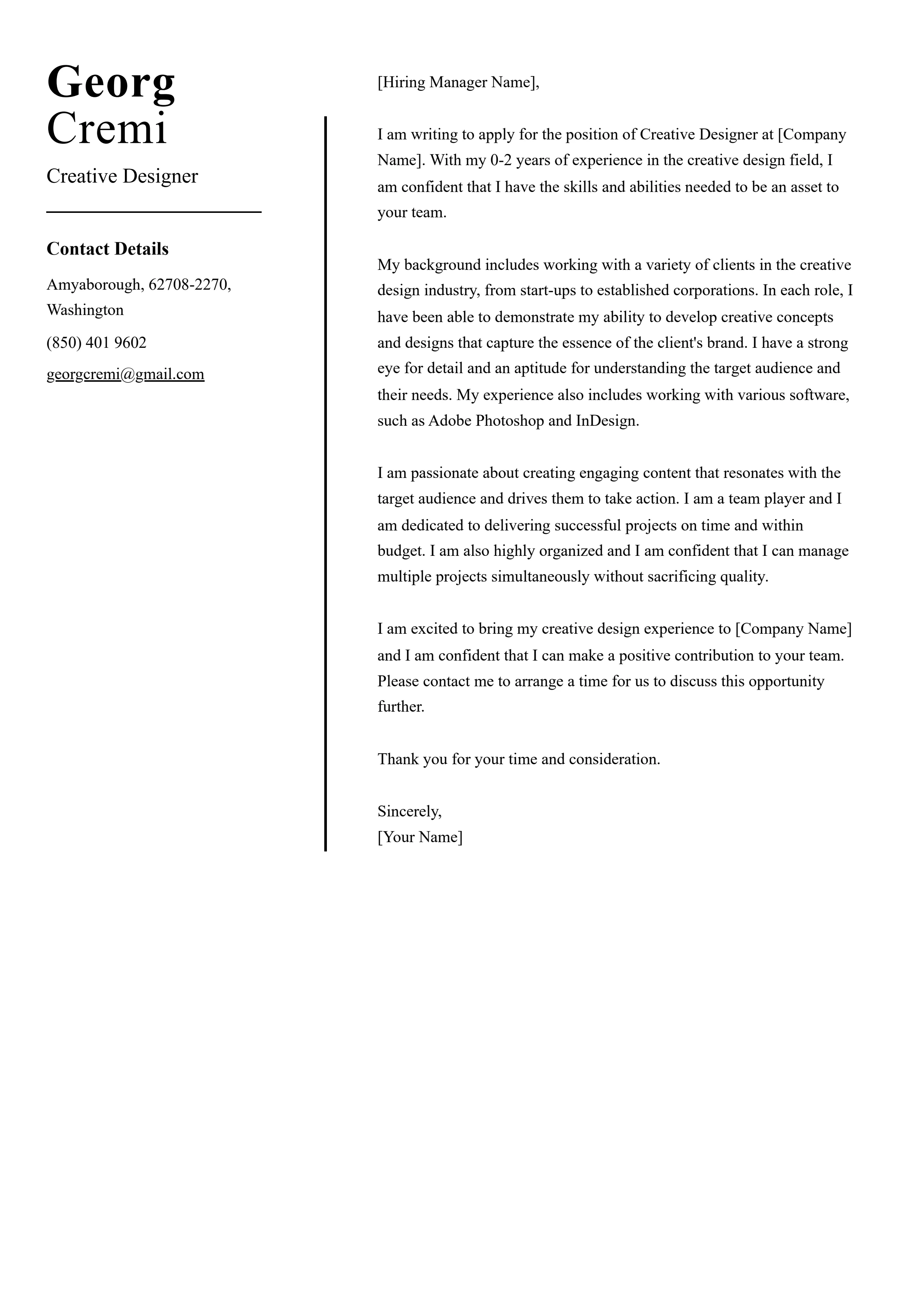
A well-written cover letter helps designers stand out in several ways. Firstly, it provides a platform to tell your story and explain your design process and creative thinking. By showcasing your personality and passion for design, you can create a connection with the hiring manager. Secondly, you can use your cover letter to tailor your application to the specific job, demonstrating that you’ve researched the company and understand their needs. This shows initiative and attention to detail. Finally, your cover letter is an opportunity to showcase your writing skills, a crucial element for designers who must communicate ideas and collaborate effectively. Your cover letter allows you to demonstrate that you’re more than just a talented designer; you’re a well-rounded professional.
Key Components of a Designer Cover Letter
Header and Contact Information
Your cover letter should begin with a professional header, including your name, contact information (phone number, email address, and LinkedIn profile URL), and the date. Ensure that your contact details are up-to-date and easy to read. Including your LinkedIn profile is highly recommended, as it provides an additional platform for showcasing your work and professional connections. In addition, include the hiring manager’s name, title, and the company’s address if available. This personalized touch demonstrates your attention to detail and interest in the specific role.
Greeting the Hiring Manager

Always address the hiring manager by name. Research the company website or LinkedIn to find the correct contact person. Use a formal greeting such as “Dear Mr./Ms./Mx. [Last Name]” or “Dear [Hiring Manager Name].” If you cannot find a specific name, a general greeting like “Dear Hiring Team” or “Dear [Company Name] Hiring Manager” is acceptable. Avoid generic greetings like “To Whom It May Concern.” A personalized greeting immediately grabs the reader’s attention and shows that you’ve taken the time to research the opportunity.
Introduction and Statement of Purpose
Your introduction should immediately grab the reader’s attention. Start by stating the position you are applying for and where you found the listing. Briefly mention why you’re interested in the role and the company. Highlight your key strengths or a notable achievement that directly relates to the job requirements. Clearly state your purpose in applying and what you hope to achieve. This section sets the tone for the rest of the letter and should entice the hiring manager to continue reading. The goal is to create interest and demonstrate your enthusiasm right from the start. A strong opening statement is vital to making a positive first impression.
Body Paragraphs Highlighting Skills and Experience
The body of your cover letter is where you showcase your relevant skills and experience. Use specific examples to demonstrate your accomplishments and how they align with the job requirements. Each paragraph should focus on a different aspect of your qualifications, such as your design skills, project management abilities, or experience working in a team. Tailor this section to match the specific job description, ensuring you use keywords and phrases from the listing. Provide evidence of your skills and describe the impact your work has had on previous projects or employers. This section is the meat of your cover letter, so ensure it’s clear, concise, and compelling.
Showcasing Design Skills
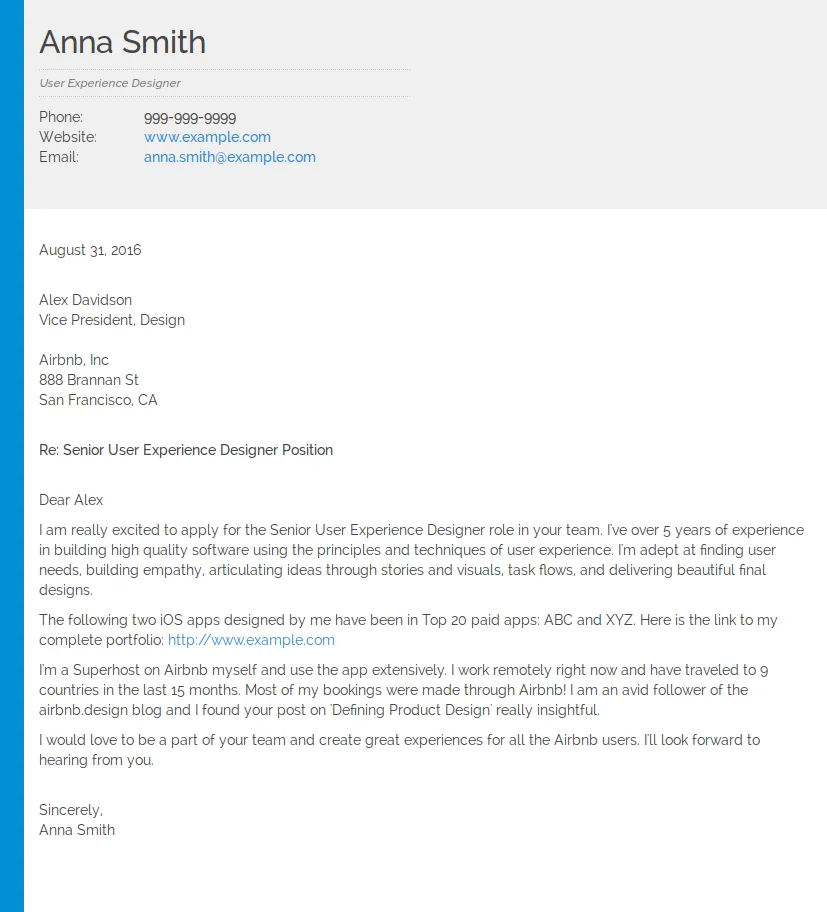
When highlighting your design skills, be specific about the software and design principles you’re proficient in. Mention tools like Adobe Creative Suite, Sketch, Figma, or any other relevant software. Describe your experience with design thinking, user research, or other methodologies that are critical to the role. Provide examples of projects where you’ve applied these skills, such as designing a new website, creating a marketing campaign, or developing user interfaces. Mention any design awards or recognition you’ve received. Always link back to the job requirements, demonstrating that you have the skills necessary to succeed.
Quantifying Achievements
Whenever possible, quantify your achievements to provide concrete evidence of your impact. Use numbers and data to demonstrate your successes, such as the percentage increase in website traffic after a redesign, the number of users who adopted a new feature, or the cost savings achieved through a design project. Use phrases like “increased user engagement by X%,” “reduced bounce rate by Y%,” or “saved the company Z dollars.” Quantitative achievements make your accomplishments more compelling and help the hiring manager understand the value you bring. Provide the context for your achievements and explain the positive outcomes of your work.
Tailoring the Cover Letter to the Job Description
The most successful cover letters are customized to each job application. Carefully review the job description and identify the key skills, experiences, and qualifications the employer is looking for. Then, tailor your cover letter to address these specific requirements. Use the same keywords and phrases from the job description and provide examples of how your skills and experiences align with their needs. Show the hiring manager that you’ve thoroughly researched the role and understand what the company is looking for. This personalization demonstrates your genuine interest and attention to detail, significantly increasing your chances of getting an interview.
Call to Action and Closing
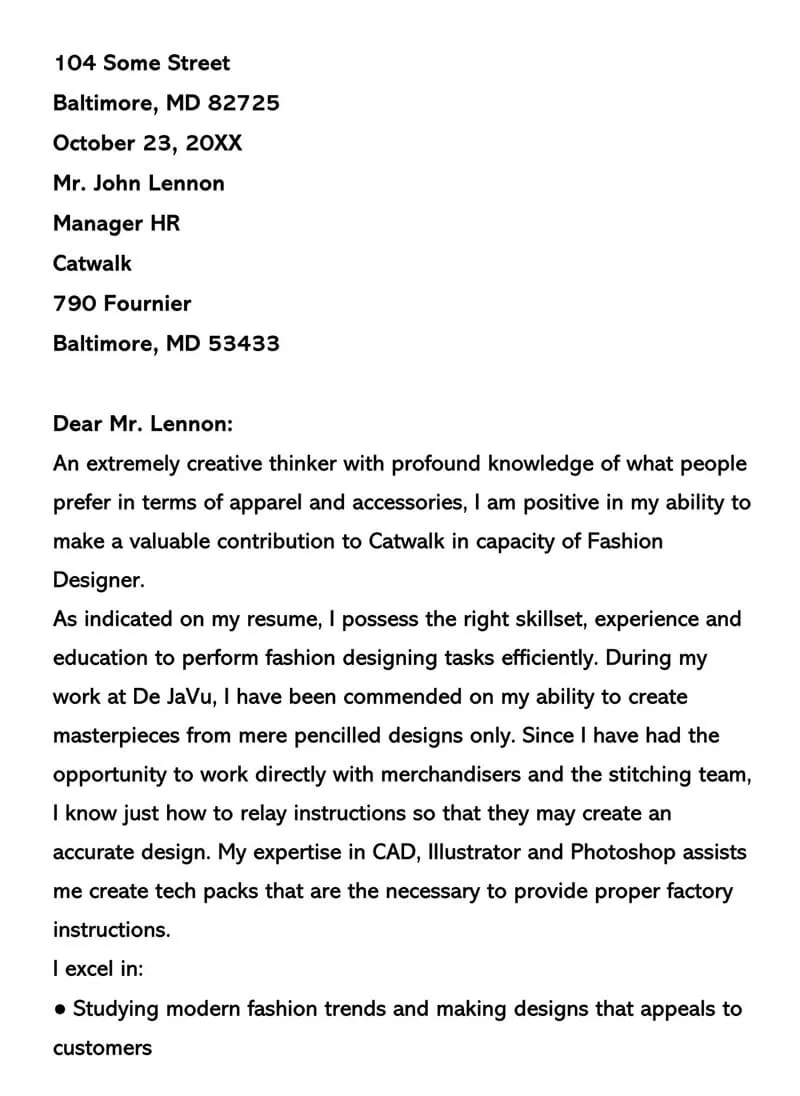
Conclude your cover letter with a clear call to action. Express your enthusiasm for the opportunity and state your interest in an interview. Thank the hiring manager for their time and consideration. Provide your contact information once more and reiterate your availability. End with a professional closing, such as “Sincerely,” “Best regards,” or “Thank you.” Ensure your closing is followed by your full name. Proofread your entire cover letter one last time before sending it. Your closing should reinforce your interest and encourage the hiring manager to move forward with your application.
Cover Letter Examples for Different Design Roles
Example 1 Graphic Designer
In a graphic design cover letter, emphasize your expertise in visual communication, branding, and design software. Highlight projects where you’ve developed logos, marketing materials, or website layouts. Showcase your creativity and ability to translate concepts into visually appealing designs. Quantify your achievements by mentioning successful campaigns or improvements in brand recognition. Tailor your letter to the specific design role and include examples relevant to their industry. Make sure to include your online portfolio link.
Example 2 UX/UI Designer

For UX/UI design, focus on your user-centered design approach, user research skills, and experience with wireframing and prototyping tools. Mention projects where you’ve improved user experience, increased conversion rates, or enhanced website usability. Detail your ability to collaborate with developers, product managers, and other stakeholders. Demonstrate your understanding of user needs and your commitment to creating intuitive and user-friendly designs. Include links to your UX portfolio and case studies.
Example 3 Web Designer
A web designer cover letter should highlight your skills in web development, responsive design, and front-end technologies such as HTML, CSS, and JavaScript. Include examples of your web design projects, emphasizing your ability to create visually appealing and user-friendly websites. Mention your experience with content management systems (CMS) like WordPress or Drupal. Showcase your understanding of SEO principles and web accessibility standards. Provide a link to your online portfolio or website.
Example 4 Interior Designer
An interior designer cover letter should emphasize your design expertise, space planning skills, and knowledge of materials and construction. Showcase your portfolio of interior design projects and highlight any awards or recognition you’ve received. Detail your ability to collaborate with clients, contractors, and architects. Mention your experience with design software like AutoCAD or Revit. Focus on your attention to detail, creativity, and ability to create functional and aesthetically pleasing spaces. Ensure your portfolio is easily accessible.
Common Mistakes to Avoid in a Designer Cover Letter
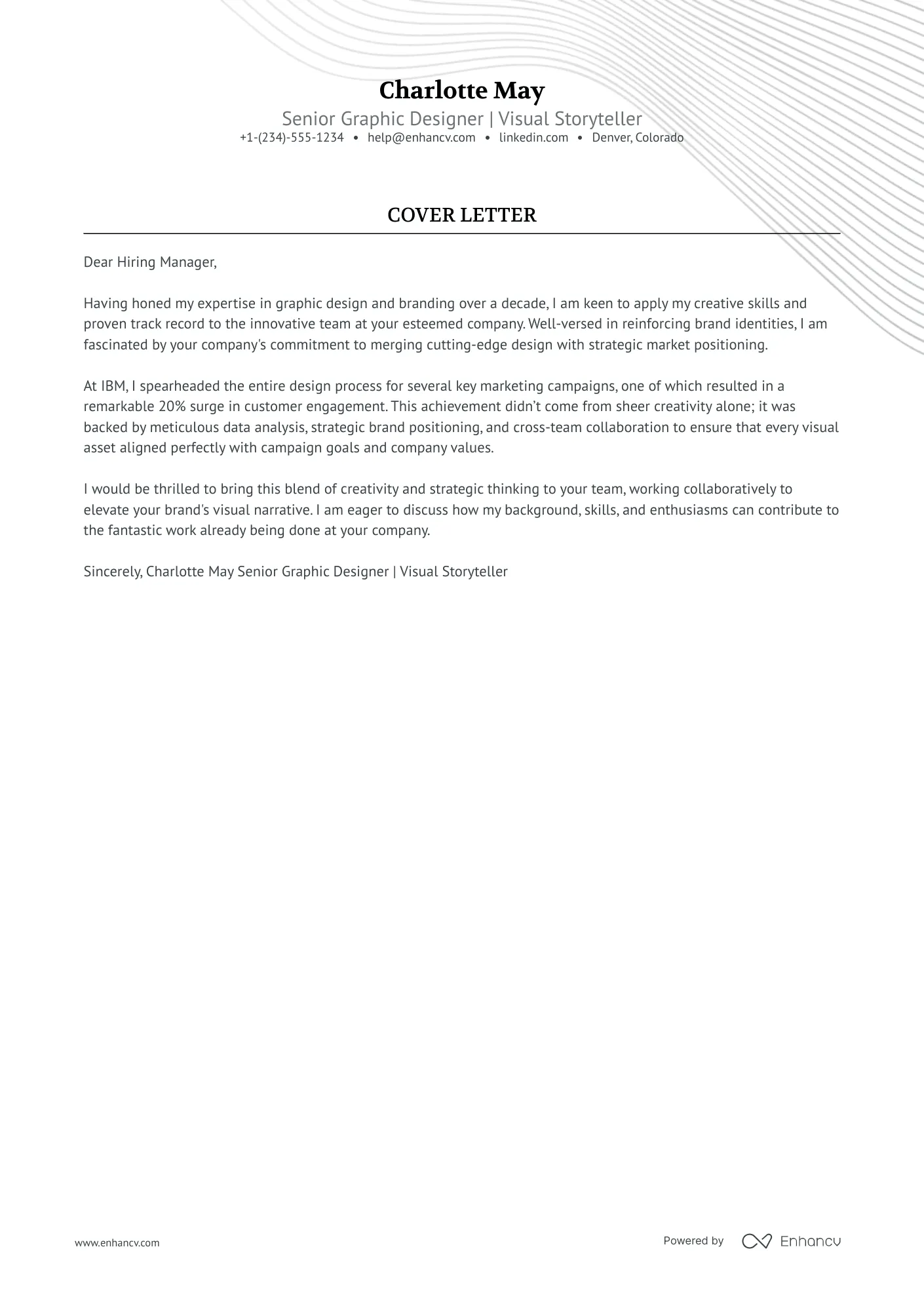
Generic Cover Letters
One of the biggest mistakes is sending a generic cover letter that isn’t tailored to the specific job or company. Generic cover letters don’t demonstrate your interest or show that you’ve taken the time to research the role. Instead, create a customized cover letter for each job application, highlighting the skills and experiences that align with the job requirements. Show the hiring manager that you understand the company’s needs and how you can contribute to their goals. A personalized cover letter significantly increases your chances of getting an interview.
Typos and Grammatical Errors
Typos and grammatical errors can undermine your credibility and professionalism. Proofread your cover letter carefully before submitting it. Use a spell checker, but also manually review your letter to catch any errors that spell check might miss. Have a friend or colleague review your letter for any mistakes. A clean, error-free cover letter shows your attention to detail and commitment to quality. Poor grammar and typos make you seem careless and unprofessional.
Ignoring the Job Description
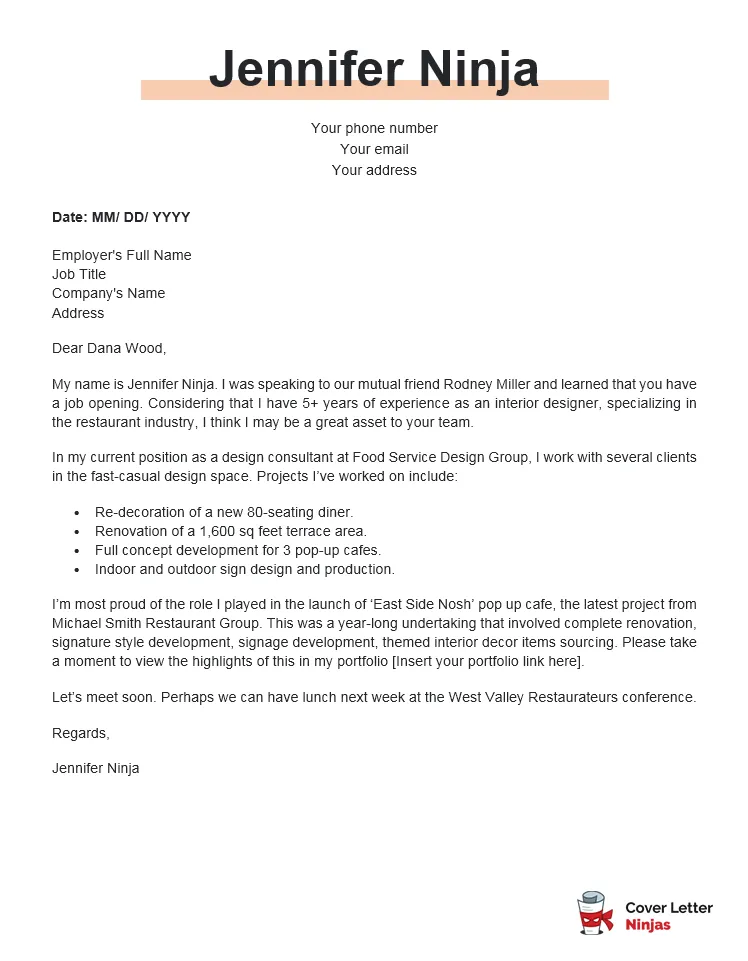
Failing to address the requirements of the job description is a missed opportunity. Tailor your cover letter to each job and highlight the skills and experiences that the employer is seeking. Use the same keywords and phrases from the job description to demonstrate that you meet their qualifications. Research the company and understand their values and goals. Ignoring the job description makes it difficult for the hiring manager to see how your qualifications align with their needs. Customize your cover letter to show how you can solve the problems that the company is facing.
Using Too Much Jargon
While it’s important to use industry-specific terms, avoid overusing jargon. Excessive jargon can make your cover letter difficult to understand and can detract from your key message. Make sure that your language is clear and concise, and that you’re communicating effectively. Use simple, direct language to convey your ideas. Aim to write in a way that is both professional and easily accessible to the hiring manager. Prioritize clarity and ensure that your message is easy to understand.
Formatting Issues
Poor formatting can make your cover letter difficult to read. Use a clear and professional font, such as Arial or Times New Roman, and maintain a consistent font size. Ensure that your margins are correct and the spacing is readable. Break up large blocks of text with bullet points and paragraphs. A well-formatted cover letter is visually appealing and demonstrates your attention to detail. Make sure that your cover letter is easy to read and presents your information in a clear and organized manner. Use a template to ensure consistency.
Tips for Writing a Compelling Designer Cover Letter
Researching the Company
Thoroughly research the company and the role you are applying for. Visit their website, social media profiles, and any relevant industry publications. Understand the company’s mission, values, and culture. Tailor your cover letter to reflect your knowledge of the company and demonstrate how your skills and experiences align with their needs. This shows your interest and commitment to the opportunity. Researching the company gives you an edge by demonstrating you have taken the time to learn about them and understand their goals.
Highlighting Relevant Skills and Experience
Focus on your most relevant skills and experiences. Identify the key qualifications the employer is looking for and emphasize how your skills align with these requirements. Provide specific examples of projects or experiences that demonstrate your abilities. Quantify your achievements whenever possible to showcase the impact of your work. Tailor your letter to the specific job requirements and highlight the most relevant aspects of your background.
Showcasing a Portfolio
Include a link to your online portfolio, where you can showcase your best design work. Your portfolio is a visual representation of your skills and experience. Make sure your portfolio is well-organized, easy to navigate, and features your most relevant projects. Provide clear descriptions of each project, highlighting your role, the design challenges you faced, and the results you achieved. Your portfolio is a vital tool for demonstrating your creative abilities. Make sure your portfolio is up-to-date and reflects your design expertise.
Proofreading and Editing
Proofread your cover letter multiple times to catch any typos or grammatical errors. Have a friend or colleague review your letter for any mistakes. A clean, error-free cover letter demonstrates your attention to detail and professionalism. Correct any grammatical errors, spelling mistakes, or punctuation errors. A well-edited cover letter makes a positive impression on the hiring manager. Your cover letter is an opportunity to showcase your writing skills, so ensure that it’s free from errors.
Conclusion
A well-written cover letter is a vital tool for designers seeking to land their dream job. By understanding the key components, avoiding common mistakes, and following the tips provided, you can create a compelling cover letter that effectively showcases your skills, experience, and passion for design. Always tailor your cover letter to each job, highlight your achievements, and present yourself in the best possible light. Your cover letter is your opportunity to make a strong first impression and convince the hiring manager that you are the perfect candidate for the role. Use these guidelines to create an outstanding cover letter and advance your design career. Remember to proofread your work before submitting. Good luck with your applications!
